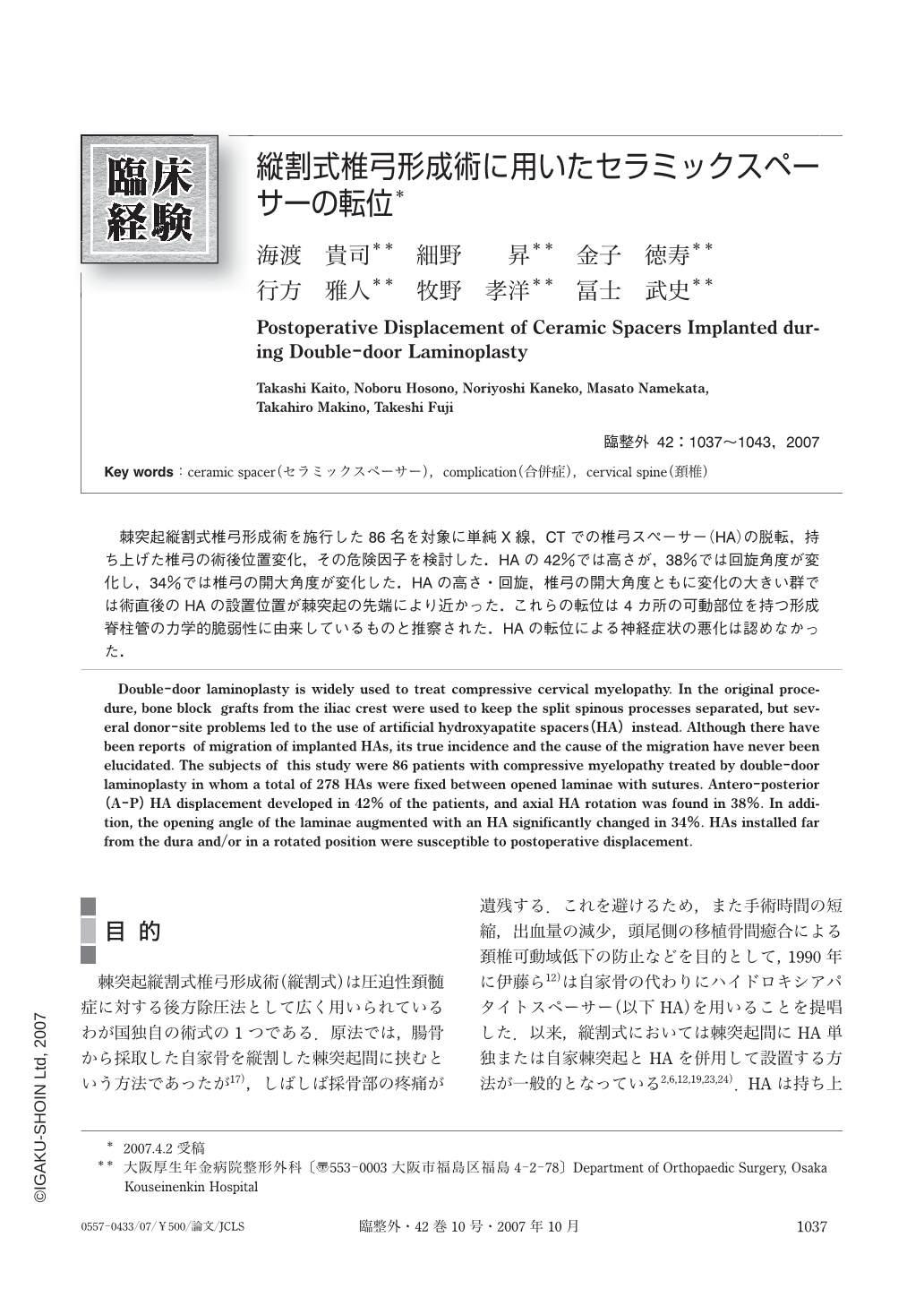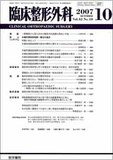Japanese
English
- 有料閲覧
- Abstract 文献概要
- 1ページ目 Look Inside
- 参考文献 Reference
棘突起縦割式椎弓形成術を施行した86名を対象に単純X線,CTでの椎弓スペーサー(HA)の脱転,持ち上げた椎弓の術後位置変化,その危険因子を検討した.HAの42%では高さが,38%では回旋角度が変化し,34%では椎弓の開大角度が変化した.HAの高さ・回旋,椎弓の開大角度ともに変化の大きい群では術直後のHAの設置位置が棘突起の先端により近かった.これらの転位は4カ所の可動部位を持つ形成脊柱管の力学的脆弱性に由来しているものと推察された.HAの転位による神経症状の悪化は認めなかった.
Double-door laminoplasty is widely used to treat compressive cervical myelopathy. In the original procedure, bone block grafts from the iliac crest were used to keep the split spinous processes separated, but several donor-site problems led to the use of artificial hydroxyapatite spacers (HA) instead. Although there have been reports of migration of implanted HAs, its true incidence and the cause of the migration have never been elucidated. The subjects of this study were 86 patients with compressive myelopathy treated by double-door laminoplasty in whom a total of 278 HAs were fixed between opened laminae with sutures. Antero-posterior (A-P) HA displacement developed in 42% of the patients, and axial HA rotation was found in 38%. In addition, the opening angle of the laminae augmented with an HA significantly changed in 34%. HAs installed far from the dura and/or in a rotated position were susceptible to postoperative displacement.

Copyright © 2007, Igaku-Shoin Ltd. All rights reserved.


